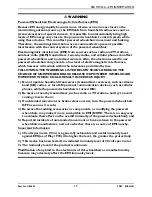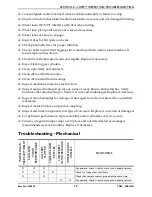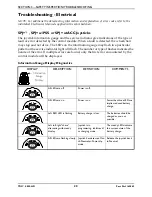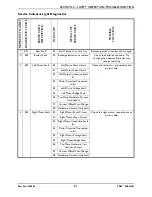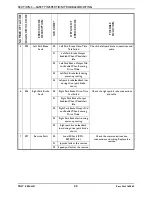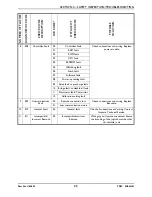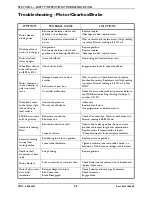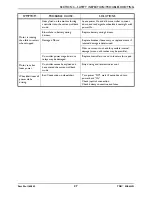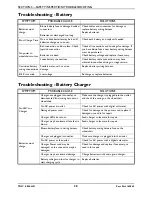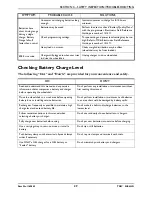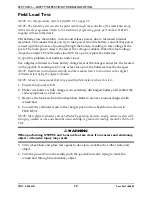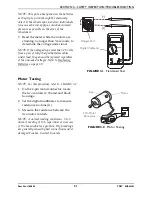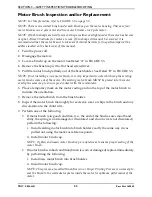
SECTION 3—SAFETY INSPECTION/TROUBLESHOOTING
29
Checking Battery Charge Level
The following “Do’s” and “Don’ts” are provided for your convenience and safety.
Batteries have
short driving range
during a single
charge. Battery
Gauge falls off
faster than normal.
Consumer not charging batteries long
enough.
Instruct consumer to charge for 8-10 hours
minimum.
Batteries may be weak.
Perform load test or check “Battery Quality Menu”
with the programmer. Electronics Field Reference
Guide, part number 1141471.
Check programming settings.
Torque setting and power level setting may be too
high. Refer to MK6i Electronics Field Reference
Guide, part number 1141471.
Heavy load on motors.
Chairs weight distribution may be offset
(wheelchair may be front loaded).
E28 Error code.
Charger still plugged in when user tries
to drive the wheelchair.
Unplug charger to drive wheelchair.
DO
DON’T
Read and understand this manual and any service
information that accompanies a battery and charger
before operating the wheelchair.
Don’t perform any installation or maintenance without
first reading this manual.
Move the wheelchair to a work area before opening
battery box or installing service batteries.
Don’t perform installation or maintenance of batteries
in an area that could be damaged by battery spills.
Recharge as frequently as possible to maintain a high
charge level and extend battery life.
Don’t make it a habit to discharge batteries to the
lowest level.
Follow recommendations in this manual when
selecting a battery or charger.
Don’t use randomly chosen batteries or chargers.
Fully charge new batteries before using.
Don’t put new batteries into service before charging.
Use a carrying strap to remove, move or install a
battery.
Don’t tip or tilt batteries.
Push battery clamps on the terminals. Spread clamps
wider if necessary.
Don’t tap on clamps and terminals with tools.
Use ONLY a GEL charger for a GEL battery or
“Sealed” battery.
Don’t mismatch your battery and chargers.
SYMPTOM
PROBABLE CAUSE
SOLUTIONS



